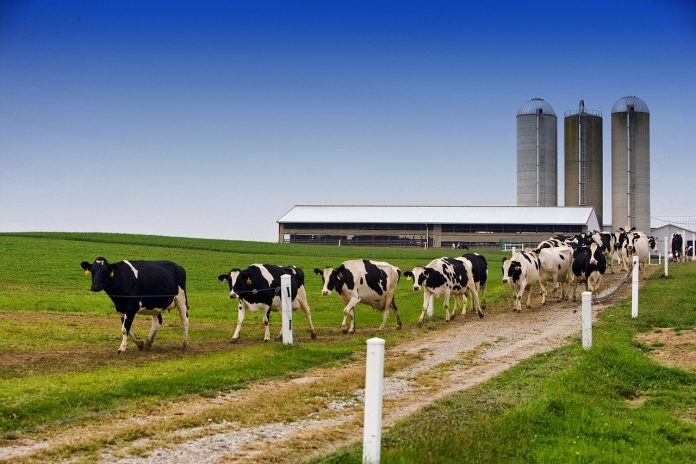Working on the farm in my early years, my uncle would step out in the morning air and take a big whiff of the air and say “that is the smell of money.” He was referring to the odor from his livestock farm. The city neighbor might suggest a description as “stinky.” Why the dichotomy of the air smell?
Cows and cow manure have a unique odor. Farmers give great care to their dairy cows which sustain the family with income from the cow’s milk, thus the “smell of money.” Dairy farmers are valuable to our society as they provide consumers with high-quality dairy products and recycle the manure to the soil to grow forages to feed to their cows. Farmers are the true recyclers! The average American consumer generates 2,000 pounds of garbage each year! Two-thirds goes into the landfill each year and is never recycled. Applaud our farmers for good stewardship of the land and good nutrition for consumers.
Farmers are good stewards of their cows and land, but new technology is available to improve the efficiency of manure utilization and improve the financial bottom line of the farm. Manure contains valuable nutrients in the form of nitrogen, phosphorus, and potassium. The nutrients are valuable for crop production when properly applied to the soil.
Ohio State research shows the average Holstein milk cow produces approximately 150 pounds a day of manure. Manure increases by approximately three pounds a day for each added pound of dry feed intake. Higher milk production does not necessarily increase manure output. The ration fed to the cows, if properly formulated, can alter the amount and content of the manure. Higher than normal manure nutrient content can represent losses of potentially digestible nutrients to the cow which results in increased feed costs.
Cow diets that have high haylage when compared to corn silage have higher manure urine and nitrogen volume. Forages that contain highly digestible Neutral Detergent Fiber (NDF) feed in diets of lactating cows will decrease manure output. Rations formulated with the new National Research Council and Cornell Net Carbohydrate and Protein System standards of metabolizable protein and amino acids will lower urinary nitrogen. Manure nitrogen is correlated with bulk tank milk urea nitrogen (MUN). Proper MUN in the range of eight to 12 is the goal for the efficient use of protein.
Phosphorus (P) is an important mineral to dairy cows for proper health, reproduction, and production. Cows recycle phosphorus through their saliva into the rumen and back to the blood for efficient use of phosphorus. Dietary phosphorus contents have reduced over the years and levels of .35% to .38% dry matter from quality forages are adequate for lactating cows. Excessive levels of dietary phosphorus can occur in herds fed byproduct feeds.
State regulatory agencies establish and enforce manure land application rates based on nitrogen, phosphorus, or both. Manure nitrogen can be modified with feed changes easier than manure phosphorus to meet regulatory requirements. Manure land application rates along with grid soil sampling is a technology that provides information to utilize manure nutrients more efficiently. Feed and mapping technology will continue to develop to improve nutrient use and make the “smell of money” even better.













